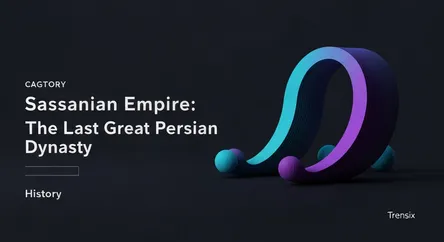History
Sassanian Empire: The Last Great Persian Dynasty

Discover the Sassanian Empire, the last pre-Islamic Persian dynasty that stood as a world power and shaped the culture of the Middle East and beyond.
What is it?
The Sassanian Empire, also known as the Neo-Persian Empire, was the last great Iranian empire before the rise of Islam. Founded in 224 CE by Ardashir I after he defeated the Parthian Empire, it ruled for over 400 years until 651 CE. The empire's territory at its peak extended across the Middle East, encompassing modern-day Iran, Iraq, Afghanistan, and parts of Turkey, Syria, and Central Asia. The Sasanians saw themselves as the successors to the Achaemenid Empire and initiated a revival of Iranian nationalism. Zoroastrianism was established as the state religion, heavily influencing the empire's culture and governance. For centuries, the Sassanian Empire was a leading world power, recognized as the equal of its rival, the Roman and later Byzantine Empire.
Why is it trending?
The Sassanian Empire is a recurring topic of historical interest because it represents a pinnacle of Persian civilization. Its era witnessed significant achievements in art, science, and architecture, with Sasanian culture influencing regions from Western Europe to China. The constant conflict and diplomatic exchanges with the Roman-Byzantine Empire defined the political landscape of late antiquity. Moreover, the Sassanian administrative and political structures were so effective that they were later adopted and adapted by the Islamic Caliphates that succeeded the empire. The empire's role in the history of religions is also crucial, not only for solidifying Zoroastrianism but also for the context it provided for the flourishing of other communities, such as the Jews who compiled the Babylonian Talmud within its borders.
How does it affect people?
The legacy of the Sassanian Empire is vast and enduring. Much of what is now considered Islamic art, architecture, and literature was built upon Sasanian foundations. Their sophisticated bureaucracy and systems of governance left a lasting blueprint for statecraft in the region. Sasanian cultural influence was immense, spreading via trade routes like the Silk Road and shaping artistic traditions in the Byzantine Empire, medieval Europe, and Asia. This cultural diffusion included everything from royal motifs and textiles to literature and urban planning. For modern-day Iranians, the Sassanian period is a source of immense national pride, symbolizing a final era of pre-Islamic glory and a high point of Persian influence on the world stage.